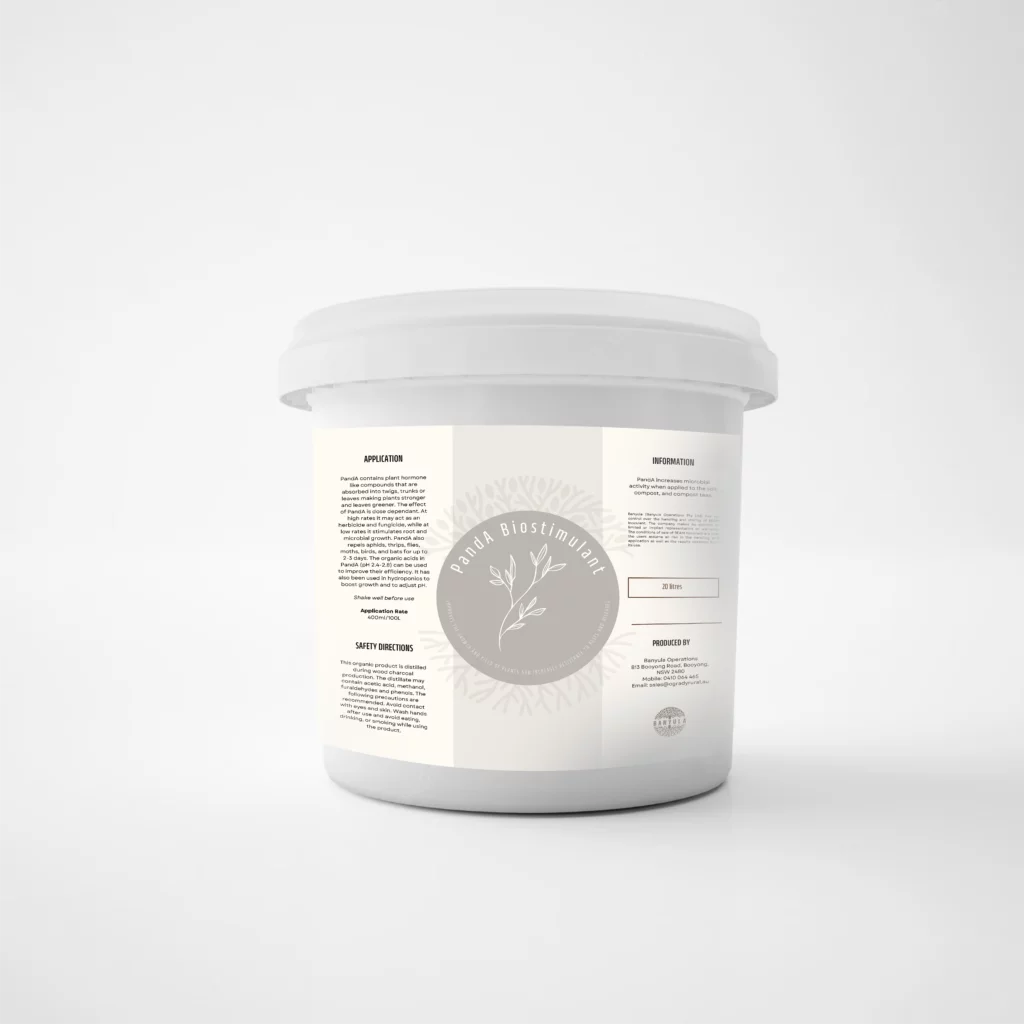
PandA Biostimulant is an organic product that improves the growth and yield of plants and increases resistance to pests and diseases. It contains natural plant hormone-like compounds that are absorbed into the leaves, twigs, and trunks, making plants stronger, leaves greener and improving fruit quality and shelf life.
PandA Biostimulant also accelerates the growth of roots, stems, tubers, leaves, flowers, and fruit and in some situations, it regulates fruit maturity, reduces leaf fall, leaf rust and fruit dropping.
The application rate for the ground spray and the effect of PandA Biostimulant is dose dependent.
At high rates (1:1-1:10), it acts as a herbicide and has some bacteriostatic effects, while at medium dilutions (1:200 – 1:500) it regulates growth and often increases yield. At low rates (1:1000 to 1:2000) it stimulates plant and microbial growth.
Used at low rates PandA Biostimulant is used to improve disease resistance, feed conversion rates and weight gain in aquaculture. It is also reported that PandA may repel aphids, thrips, flies, moths, birds, and bats for up to 2-3 days and is safe to living things in the food chain, especially insects that help pollinate plants (both native and European bee friendly).
Due to its anti-microbial activity and the increasing social and environmental pressures to reduce the use of agrochemicals, PandA is being increasingly studied for its potential to improve productivity in the agricultural and livestock industries and reduce the use of agrochemicals.
For foliar application on a wide range of crops, please follow the table given below.
*FBS – PandA Bio Stimulant as Foliar
Further information on the potential of this product can be found by researching Pyroligneous acid, wood acid, wood vinegar, bamboo vinegar, biochar and “liquid smoke seed germination”.
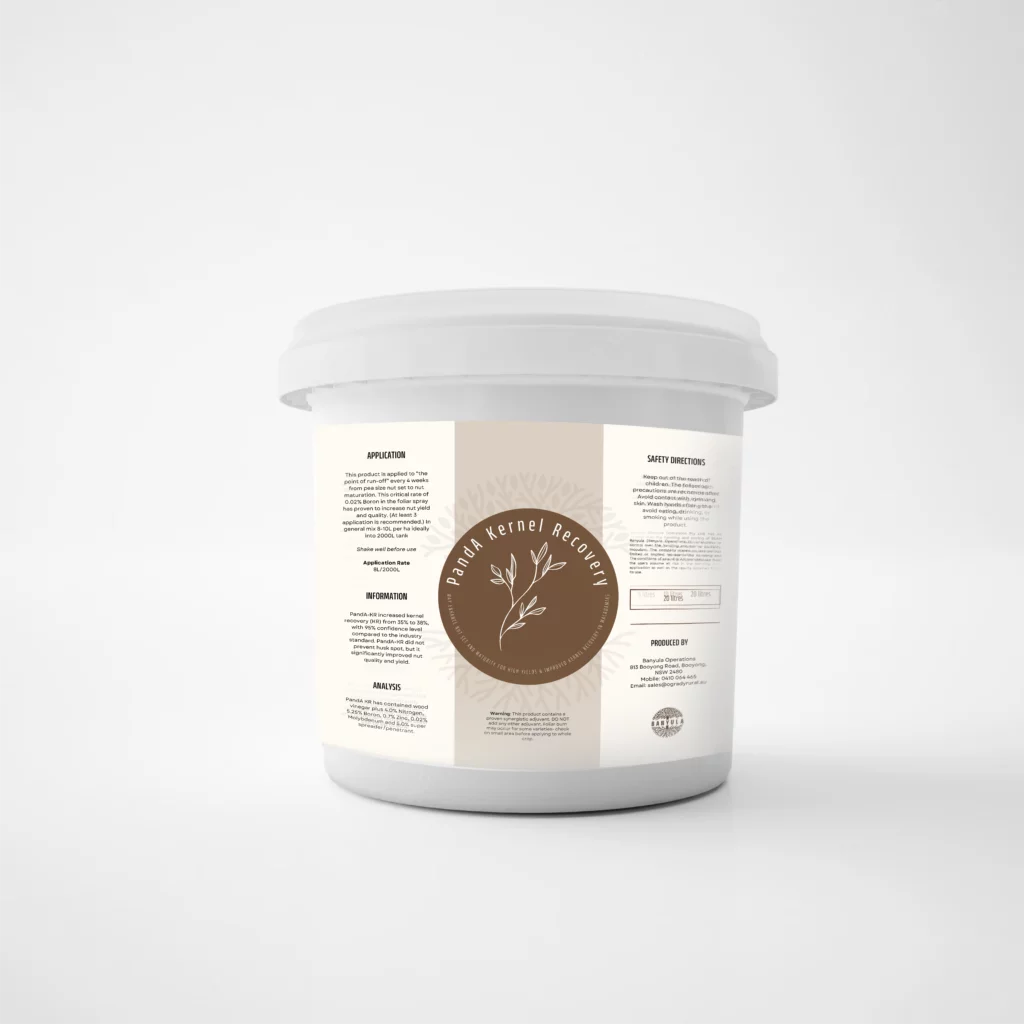
PandA KR is a foliar nutrient specifically designed for macadamias to increase kernel recovery (KR) from 35% to 38%, with 95% confidence level compared to the industry standard, however, research has shown that this product is also well suited for avocados and bananas. This product contains critical rate of 0.02% Boron (B). Foliar-applied boron is rapidly absorbed by the leaves and flower buds. This application will help ensure that flower buds have enough boron to carry them through flowering, fertilisation and fruit or nut set. PandA KR significantly improves nut quality and yield.
PandA KR application is followed up with PandA Foliar application for maximum benefits in macadamia crops.
Application
In macadamias, PandA KR is applied at a rate of 8-10L per hectare at four week intervals for three applications and then switched to PandA Foliar with the same application rate and interval. PandA KR assists with flower initiation and nut set while PandA Foliar aids in nut filling and maturity. Please read the labels on containers for application rate and mixing.
PandA KR contains PandA KR contains Pyroligneous acid, nitrogen, boron, zinc, molybdenum, and a super spreader/penetrant. The super spreader penetrant allows it to be applied with any other product for pest and disease control thus saving time. (Combined application)
The information below was compiled after 10 years of research with PandA KR, comparing it with the use of Spin & Copper in macadamias.
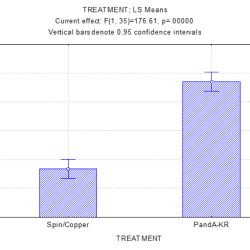
Further, twelve years of continuous yield monitoring at Ryan and Kate Hathaway’s property at Whian Whian NSW, raises the obvious question: ‘Is PandA KR a more regenerative solution than the continued use of fungicides to overcome the $10M* estimated cost of husk spot?’
Prior to the 2010 harvest the farm suffered serious husk spot losses in A16 varieties of macadamia.

Data: Variety A16 planted at 8 x 4 m (original plot size 3 rows X 39 trees). Continuous yield measurements of 39 trees in middle row since 2010 harvest.
Over these ten years the difference in the accumulated yield of all bearing trees in the Northern Rivers ** and the Hathaway trial is a staggering 19.28t of NIS per hectare.
Assuming an average price of $3.50/kg NIS there is a difference of $67,480/ha ($6,748/ha pa). ** macaman data
No fungicides have been used on the Hathaway property since the conclusion of the trial in 2014.
Reference: Akinsanmi, O.A., Miles, A.K. & Drenth, A. Alternative fungicides for controlling husk spot caused by Pseudocercospora macadamiae in macadamia. Australasian Plant Pathology 37, 141–147 (2008). https://doi.org/10.1071/AP08001

PandA Foliar is based on a modified fish protein hydrolysate, formulated to increase profits, yields and kernel recovery in macadamia nuts. PandA Foliar is the ideal companion product for PandA KR, which is based on pyroligneous acid. PandA Foliar is based on amino acid rich, fish protein hydrolysate to improve foliar nutrition between nut set and maturation. PandA Foliar has critical rate of 0.02% boron in it, that is proven to increase nut yield and quality.
Application
With macadamia orchards it is applied at a rate of 8-10L per hectare at four weeks interval for three applications to the point of run-off. This product is applied after three rounds of application of PandA KR. However, in Avocados, Coffee, and Bananas, it can be applied as standalone product for maximum benefit.
This is an excellent product for macadamia farmers who have used PandA KR for first three applications, PandA Foliar aids in nut filling and maturity.
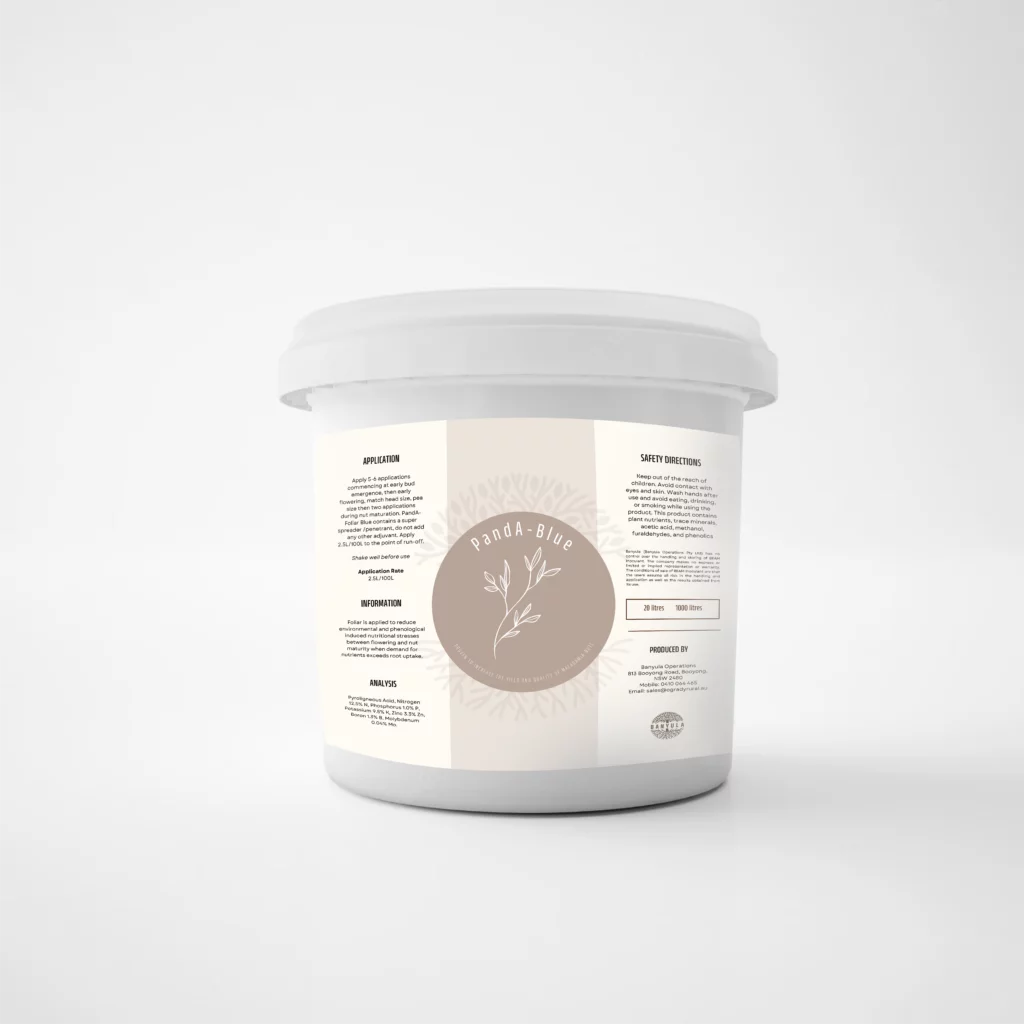
PandA Blue is a foliar product for complete nutrition during dry conditions to increase the yield and quality of crops. This is an essential go-to solution for maintaining yield during drought. It is applied to reduce environmental and phenological induced nutritional stresses between flowering and maturity when demand for nutrients exceeds root uptake.
This foliar product is ideal for both young and mature macadamia trees, coffee, avocados, and passionfruit as it assists with essential nutrient supply during flowering and fruit/nut set, and improves the overall quality of produce.
Application
In macadamias, it is applied 5-6 times commencing at early bud emergence, then early flowering, match head size, pea size then two applications during nut maturation. PandA Blue contains a super spreader/penetrant hence do not add any other adjuvant. Always apply to the point of run-off.
This product contains essential elements such as nitrogen, phosphorus, potassium, zinc, boron molybdenum and can be obtained in bulk (1000L IBC) or 20L pails.
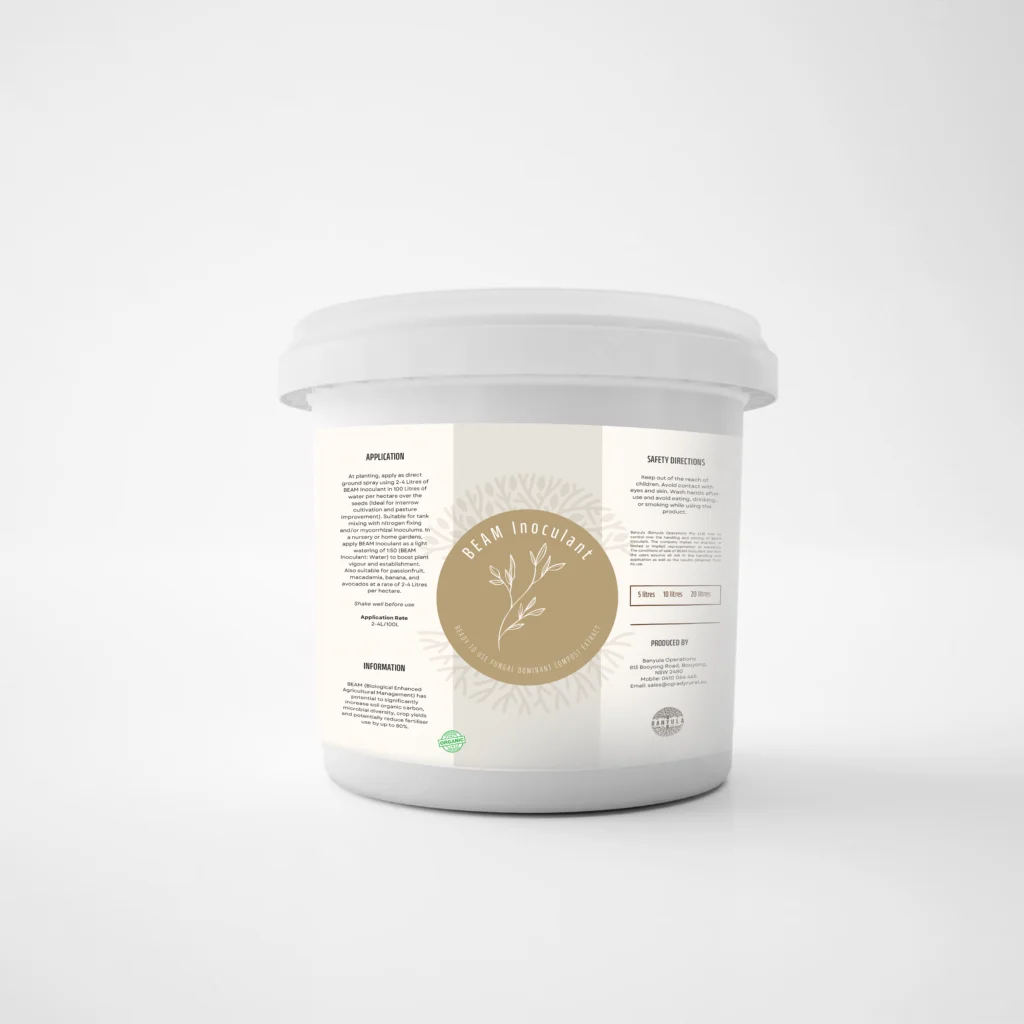
BEAM (Biologically Enhanced Agricultural Management) is a ready to use fungal-dominant compost extract, inspired by Dr David Johnson Su’s research and produced using the principles of static pile aerated compost developed by him. BEAM Inoculant is an enhanced development from Dr Johnson Su’s ground-breaking research.
When soil is degraded, we know that replenishing soil microbes restores soil health.
BEAM Inoculant has been proven to regenerate soils when applied over the seed row of cover crops at planting. It is also suitable for regenerating pasture paddocks with quality nutritious grass for grazing. Combining BEAM with pasture and practicing intensive rotational grazing can sequester 20 tons of carbon in soil per hectare in a year!
BEAM Inoculant has the potential to significantly increase soil carbon, microbial diversity, crop yields and potentially reduce fertiliser use by up to 80%.
Application:
At planting, apply as a direct spray using 2-4 Litres of BEAM Inoculant in 100 Litres of water per hectare over the seed. Suitable for tank mixing with ReGenic, Rhizobium and mycorrhizal inoculums.
In the nursery or home gardens apply BEAM Inoculant as a light watering of a 1: 50 (BEAM: Water) to boost plant vigour and establishment. In general, approximately 4L per hectare is applied.
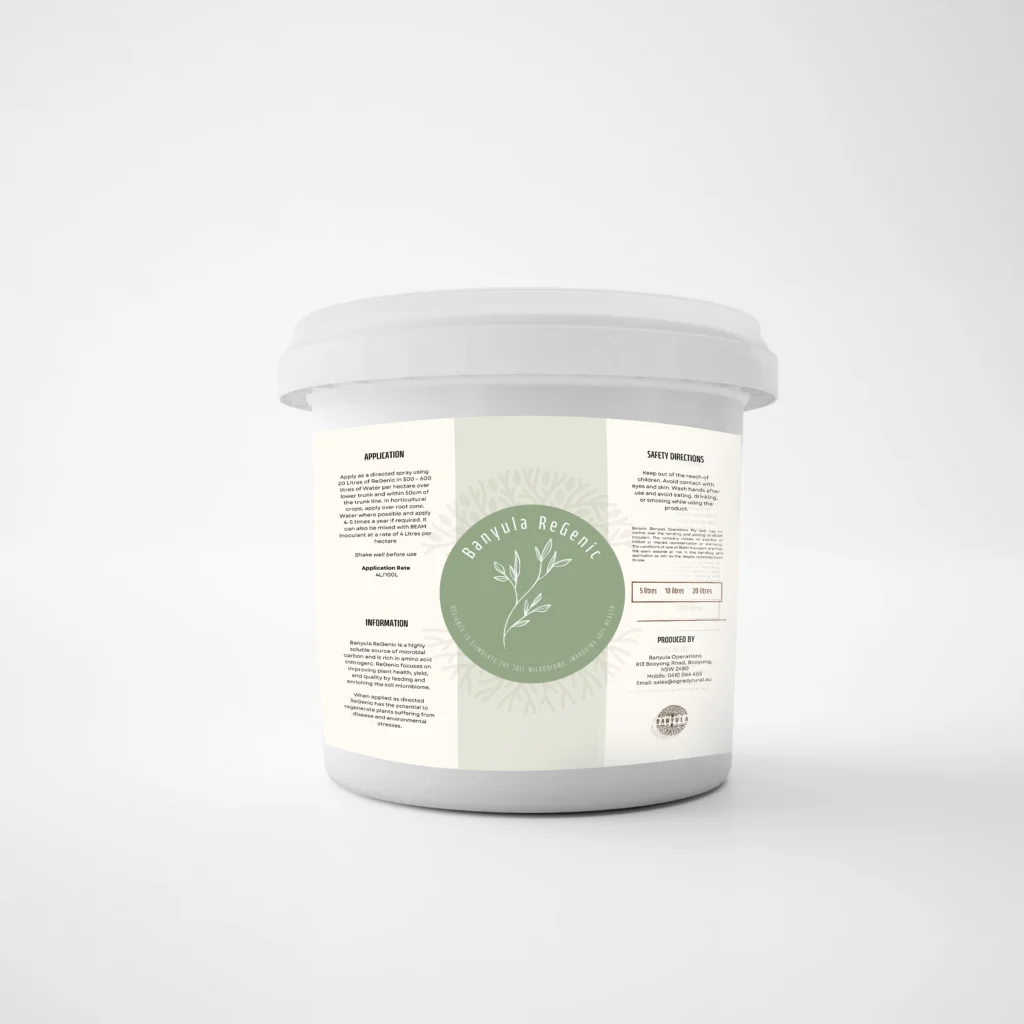
Banyula ReGenic is a highly-soluble source of microbial organic carbon and is rich in nitrogen. Banyula ReGenic contains a diverse microbial formulation, designed to stimulate the soil microbiome, improving plant health.
Historical land management practices have depleted the soil’s reserves of soluble organic carbon and nitrogen. Banyula ReGenic focuses on improving plant health, yield, and quality by feeding and enriching the soil microbiome.
When applied as directed, Banyula ReGenic has the potential to regenerate plants suffering from disease and environmental stresses. The product can also be combined with BEAM Inoculant for best results.
Application:
Apply as a direct spray using 20 litres of Banyula ReGenic in 500-600 litres of water per hectare over the lower trunk and within 50cm of the trunk line. In vegetable crops, apply over the root zone. Water in where possible and apply 4-5 times per year if required. In general, 20 L per hectare is recommended.
This product can be purchased in either 20 L pails or 1000 L IBCs.
